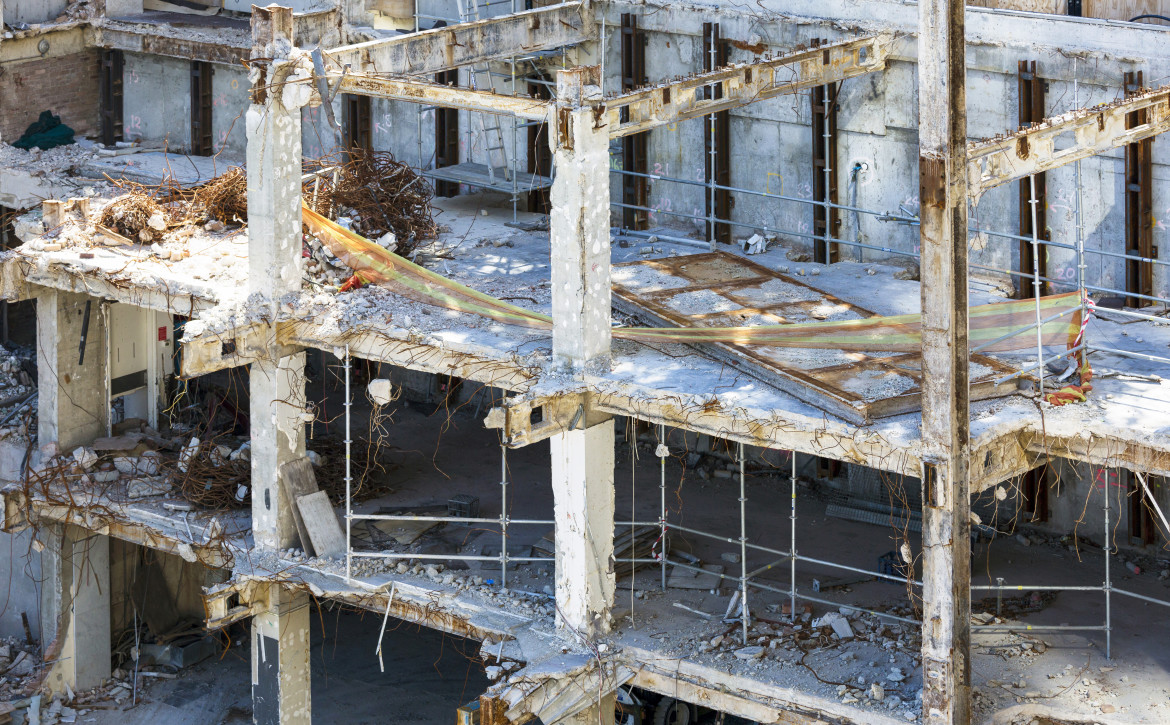On 20 March 2015, His Honour Justice Garde handed down judgment in the matter of Dustday Investments Pty Ltd v Minister for Planning and Melbourne City Council.1
Solomon Lew is a director of Dustday Investments Pty Ltd (“Dustday”) which commenced the proceeding in relation to a high profile “sawtooth” building located at 85-105 Sutton Street, North Melbourne, which was formerly the Victorian Producers Co-Operative Company Wool Store No. 5. The building was constructed around the time of the 1956 Melbourne Olympics.
Planning Scheme Amendment C207 (“Amendment C207”) sought to propose controls for the Dustday building and part of the land, namely to include the building and part of the land within a heritage overlay control.
What makes this case particularly interesting, besides Dustday’s desire to demolish the building, was that Dustday sought to injunct the Planning Minister from making a decision about Amendment C207.
Background
On 21 March 2013, the delegate of the Minister for Planning (then Matthew Guy and later, Richard Wynne) (“the Minister”) authorised Melbourne City Council (“the Council”) to prepare Amendment C207 which proposed to include Dustday’s building and part of the land in a heritage overlay under clause 43.01 of the Melbourne Planning Scheme. The effect of Amendment C207 would be that Dustday would be required to obtain a permit under the Planning and Environment Act 1987 (Vic) for the purpose of clause 43.01, before it would be allowed to demolish the building, or develop the building and land affected by the overlay.
On 11 July 2013, Dustday applied to the Council for a planning permit under the Planning and Environment Act 1987 (Vic) to demolish the building. The Minister (then Matthew Guy) imposed a series of interim heritage controls on the Dustday land from 22 August 2013 and the permit application did not progress any further.
A panel hearing was conducted over four days in November 2013 and Dustday was heard on the matter, along with other parties making submissions. The panel prepared a report dated 21 January 2014, recommending the adoption of Amendment C207 including the heritage overlay affecting the Dustday building and part of the land.
On 6 May 2014, the Future Melbourne Committee of the Council resolved to recommend the Council adopt Amendment C207.
On 27 May 2014, the Council resolved to adopt Amendment C207, including the Dustday building and part of the land in the relevant heritage overlay, and submitted the amendment to the Minister for approval.
Dustday’s position
His Honour Justice Garde conveniently listed Dustday’s pertinent questions, namely:
-
did the panel err in law by identifying a wrong issue or asking itself a wrong question thereby affecting the exercise of its powers?; and
-
did the panel fail to consider social and economic effects, because it failed to consider a key matter arising from the subject-matter, and thereby acted unreasonably?2
Among other things, Dustday sought the following relief:
- a declaration that the Panel’s recommendation on 21 January 2014 was affected by legal error and was invalid or alternatively unlawful3
- a declaration that the Future Melbourne Committee of the Council’s resolution on 6 May 2014 was affected by legal error and was invalid or alternatively unlawful
- an injunction restraining the Minister from approving Amendment C207 in a form by which the Land or the Building is made subject to a Heritage Overlay until the matter has been remitted to a panel constituted under s 153 of the Planning and Environment Act 1987 (Vic) for fresh consideration of the issues affected by error.
The Minister’s position
The Minister’s defence did not admit a number of the salient allegations put by Dustday. However, as the case progressed, the issues became even less relevant – the Minister submitted he did not seek to approve Amendment C207 and therefore, the injunctive relief sought by the plaintiff became irrelevant.
Accordingly, in that situation, there was little the Minister was compelled to address in the case, save for the general position in relation to the Minister’s rights, contending that he did not accept that it was necessary to join him to the proceeding.
The Council’s position
The Council made submissions in relation to the decisions of the planning panel and the Council itself, namely that neither erred.
In particular, the Council contended that:
- the condition of the building was a relevant consideration
- the panel did not confine itself in the manner suggested by Dustday (namely that demolition is an inevitable outcome)
- the demolition of Dustday’s building was not inevitable or irrefutable and
- the panel did consider the condition of Dustday’s building.
Moreover, the Council contended that its decision was not affected by any error of the panel (and it did not accept that the panel had erred).
The Court’s considerations
His Honour identified two sets of questions for the Court’s consideration.
First, His Honour Justice Garde noted that the panel report and recommendations are amenable to judicial review for jurisdictional error, which was not controverted by the Minister, or the Council.4 His Honour accepted Dustday’s submission that a decision involving jurisdictional error must be regarded as no decision being made, as it does not have legal foundation. His Honour considered that he was entitled to declare the decision to be invalid with no legal effect, as with a certiorari order.5
Second, His Honour queried whether the panel report and recommendations were invalid and of no effect by reason of jurisdictional error, having regard to the following two questions:
- Did the panel err in law by identifying a wrong issue or asking itself a wrong question thereby affecting the exercise of its powers?6
His Honour considered that the panel did not err. This was based upon the facts of this particular case.
- Did the panel fail to consider social and economic effects, because it failed to consider a key matter arising from the subject-matter, and thereby acted unreasonably?7
His Honour considered that the panel gave consideration to the condition and conversion of the building and formed the view that the panel was simply not persuaded by Dustday’s evidence.
His Honour noted that the panel’s enquiry as to the relevance of social and economic effects was not whether they ought be considered, but rather whether the evidence was persuasive and therefore relevant to give significant weight, or whether it was outweighed by the heritage consideration.
His Honour particularly noted (with reference to a number of authorities) that the panel is entitled to tolerance as to its use of language.8The panel’s reasons must be read fairly and as a whole with a focus on substance. They should not be read ‘minutely and finely with an eye keenly attuned to the perception of error’ particularly when legal terms such as ‘relevant’ or ‘irrelevant’ are found in submissions prepared by senior and junior counsel, and presented to a non-legally qualified panel.9
His Honour’s conclusion
His Honour Justice Garde concluded that Dustday had failed to show any legal error on the part of the panel or the Council and as a result, the proceeding must be dismissed. His Honour ordered costs be paid in favour of the Minister and the Council.
His Honour noted that it is a matter for the incoming Planning Minister (Richard Wynne) to determine the merits of the Amendment C207. His Honour observed that should the amendment be approved in its entirety, which would affect the Dustday building and part of the land, then it will be a matter for Dustday to apply for a planning permit for demolition in accordance with clauses 22.05 and 43.01 of the Melbourne Planning Scheme. Any such application would be considered on its own merits by the Council and/or the Victorian Civil & Administrative Tribunal.











